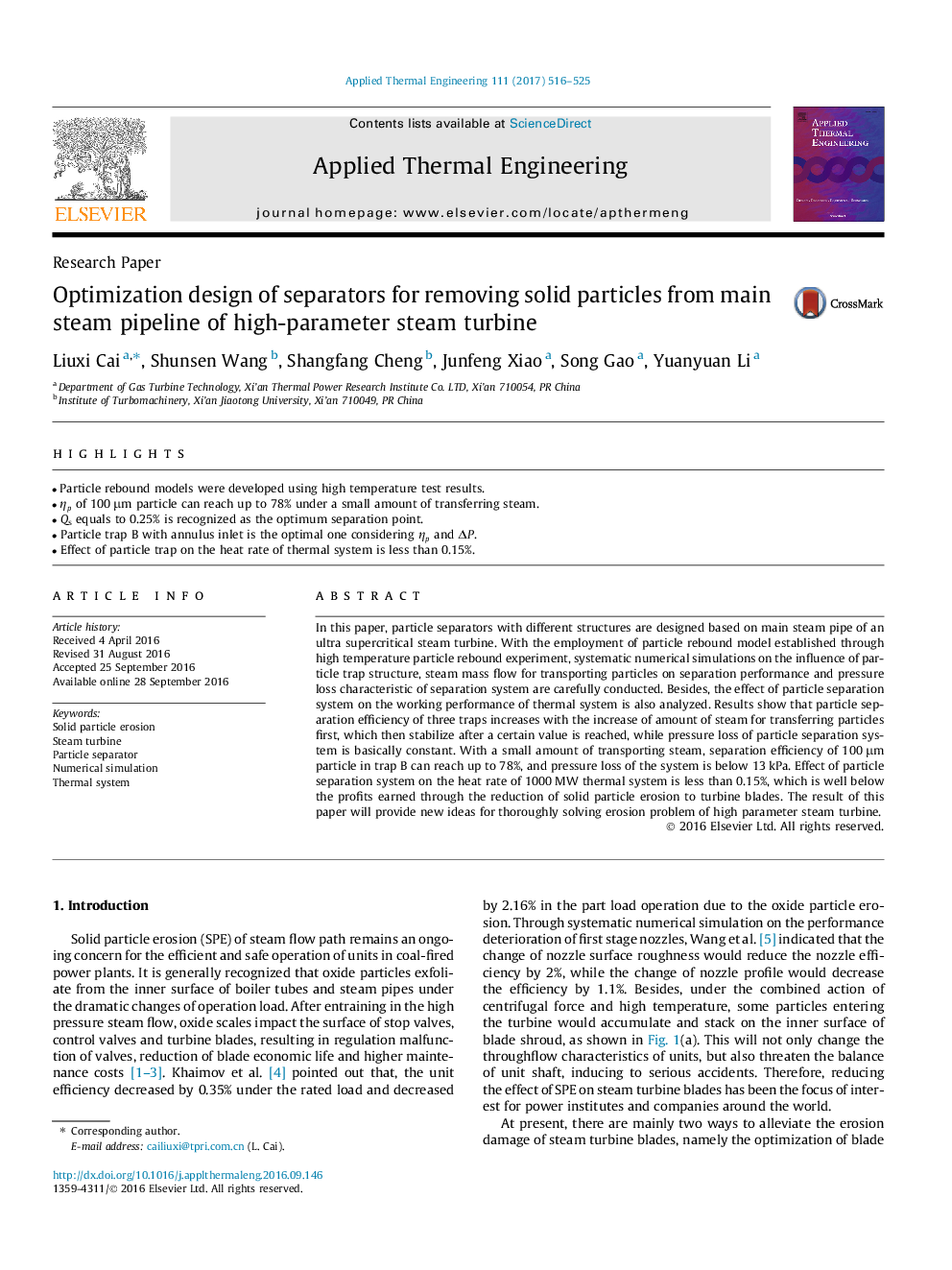| Article ID | Journal | Published Year | Pages | File Type |
|---|---|---|---|---|
| 4992137 | Applied Thermal Engineering | 2017 | 10 Pages |
Abstract
In this paper, particle separators with different structures are designed based on main steam pipe of an ultra supercritical steam turbine. With the employment of particle rebound model established through high temperature particle rebound experiment, systematic numerical simulations on the influence of particle trap structure, steam mass flow for transporting particles on separation performance and pressure loss characteristic of separation system are carefully conducted. Besides, the effect of particle separation system on the working performance of thermal system is also analyzed. Results show that particle separation efficiency of three traps increases with the increase of amount of steam for transferring particles first, which then stabilize after a certain value is reached, while pressure loss of particle separation system is basically constant. With a small amount of transporting steam, separation efficiency of 100 μm particle in trap B can reach up to 78%, and pressure loss of the system is below 13 kPa. Effect of particle separation system on the heat rate of 1000 MW thermal system is less than 0.15%, which is well below the profits earned through the reduction of solid particle erosion to turbine blades. The result of this paper will provide new ideas for thoroughly solving erosion problem of high parameter steam turbine.
Related Topics
Physical Sciences and Engineering
Chemical Engineering
Fluid Flow and Transfer Processes
Authors
Liuxi Cai, Shunsen Wang, Shangfang Cheng, Junfeng Xiao, Song Gao, Yuanyuan Li,
